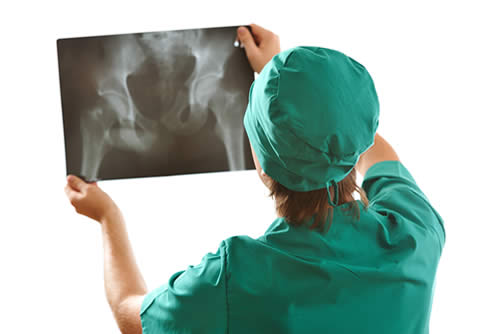Many patients with lower back pain can find relief through a common technique called lumbar fusion. It is the process of surgically mending two or more lumbar spine bones together next to the sides of the bone, placing bone graft along the spine, and ultimately causing it to fuse together. There are different ways this procedure can be performed, but one of the newer approaches is through minimally invasive spinal (MIS) surgery.
Who is MIS lumbar fusion for?
MIS lumbar fusion is used to treat a variety of lower back conditions. These include degenerated lumbar discs, lumbar instability, back pain, fracture, spondylolisthesis, tumor, failed back syndrome, recurrent herniated discs, and more. Most often, L4-5 and L5-S1 are the levels in the spine requiring treatment.
What does MIS lumbar fusion do?
The MIS surgery involves making a small one-inch incision to the side of the middle of the back at the appropriate level. Special tools such as metal screws or rods and a microscope are used during the surgery to provide the optimal stability, vision and lighting, allowing a very precise and accurate surgery. MIS procedures have smaller incisions, cause less damage to surrounding tissues, are performed quicker, cause less pain, and typically result in faster recovery.
What is MIS lumbar fusion recovery like?
While still in the hospital, physical and occupational therapists teach patients proper techniques for getting in and out of bed and for walking. Most patients return home 1-3 days after surgery. Bending at the waist, twisting, and lifting over 5 pounds should be avoided for the first few weeks until the back muscles regain strength and pain dissipates. Returning to light work duties is usually possible after a couple of weeks, with moderate level work and light recreational sports allowed 1-2 months after surgery. Dr. Charla Fischer will provide specific instructions for you based on your condition and recovery goals. Studies prove that 92-98 percent of patients experience excellent results from MIS lumbar fusion surgery, with rapid improvement of their back pain and the ability to return to most of their normal daily and recreational activities.
How do I move forward with MIS lumbar fusion?
Consult Dr. Charla Fischer at NYU Langone Center For Musculoskeletal Care in New York City to determine if you are a good candidate for MIS lumbar fusion surgery. Conservative, non-operative treatments are usually attempted before surgery, but if those fail, MIS lumbar fusion may be the best treatment for your condition.

